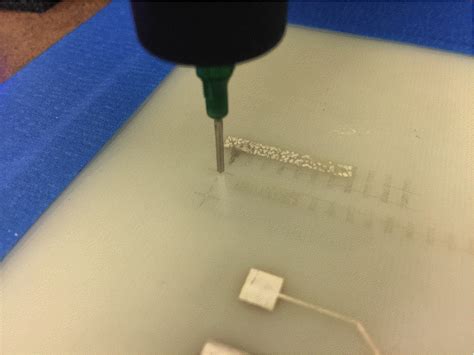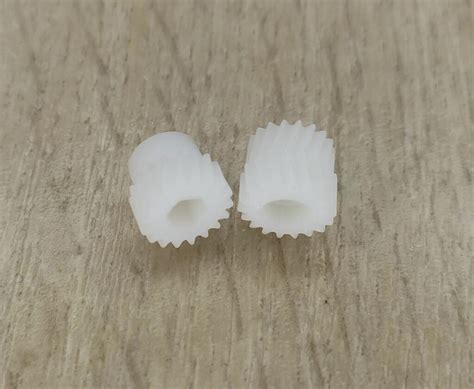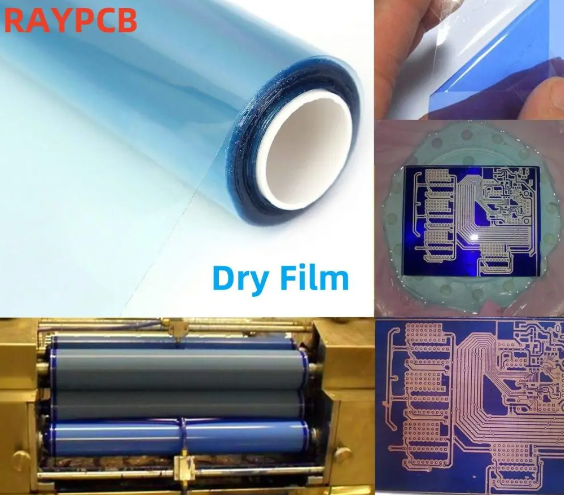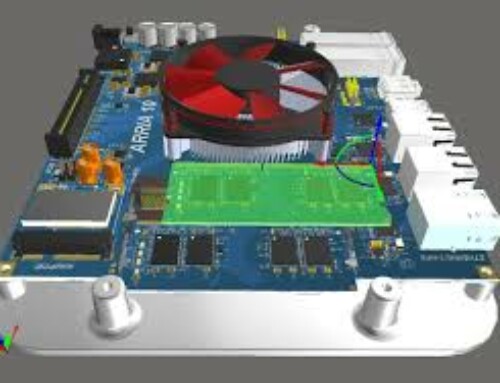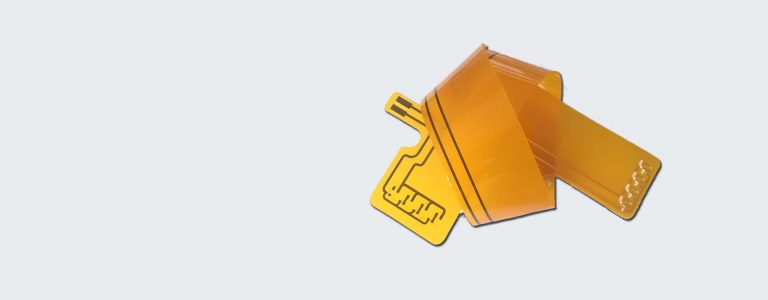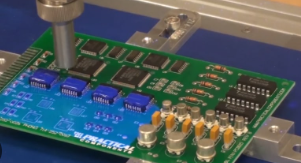Mastering the Art of Assembling PCBs: A Step-by-Step Guide
Key Takeaways
In mastering the art of PCB assembly, several key takeaways emerge from our comprehensive exploration. First and foremost, emphasizing the importance of selecting the right tools and materials cannot be overstated. Each component, from solder to the PCB itself, plays a pivotal role in the successful assembly of your project.
A crucial step in PCBA is understanding the design and layout of printed circuit boards before initiating the assembly process. This understanding ensures accurate placement and integration of components. Additionally, becoming proficient in various soldering techniques is imperative for making reliable connections that enhance the functionality and longevity of your PCB.
Testing and troubleshooting are indispensable phases that validate the effectiveness of assembled PCBs. These steps ensure that any potential faults are identified and rectified, thereby preventing future failures.
Advancing your skills with tips for enhanced efficiency and accuracy in soldering and component placement can lead to significant improvements in your assembly outcomes. Lastly, embracing best practices for continuous learning will keep you updated with the latest techniques and technologies in PCBA.
This guide serves not only as a practical manual for novices but also a refined resource for experienced engineers aiming to perfect their craft in PCB assembly.
Introduction to PCB Assembly: Tools and Materials Required
Embarking on the journey of PCB assembly requires not only skill and patience but also a well-prepared toolkit and the right materials. Whether you are a hobbyist or a professional in PCBA, the importance of beginning with comprehensive preparation cannot be overstated.
To start, one must gather all necessary tools. A high-quality soldering iron is imperative for creating strong and durable joints. Ensure that it comes with a range of tips, especially fine tips for working with smaller components. Additionally, a good set of tweezers, wire cutters, and a magnifying glass are essential to manipulate and place components accurately.
When it comes to materials, selecting the right solder is crucial; both lead-based and lead-free solders are available, with the latter being preferable due to environmental concerns. For mounting components onto the board, you’ll need solder paste if you are using reflow techniques or flux if hand-soldering.
Moreover, you should invest in good quality PCB boards themselves. The choice between single-sided, double-sided, or multi-layer boards will depend on the complexity of your project.
Tip: Always verify the compatibility of your components with your PCB board and solder type to avoid any mismatches affecting the functionality or longevity of your assembly.
For testing purposes, have a digital multimeter handy to check connections post-assembly for shorts or opens that could impact performance. Additionally, some form of inspection equipment such as a loupe or microscope can help in identifying soldering issues like cold joints or solder bridges.
Collectively, these tools and materials set up a strong foundation for adeptly handling various challenges during PCB assembly. Proper preparation empowers you to perform precise manual work necessary for assembling high-quality printed circuit boards effectively.
Step-by-Step Guide to Selecting the Right Components
Selecting the right components is a critical step in PCB assembly that sets the stage for effective manufacturing and operational efficiency. Initiating PCB component selection begins with a thorough review of your circuit design to match your electrical and physical requirements with available parts. It is essential to prioritize components that are not only compatible but also available, keeping in mind potential supply chain constraints.
Start by listing every component required, grouped by categories such as resistors, capacitors, integrated circuits, and connectors. Carefully consider the voltage and current specifications of each component to ensure reliability under operational conditions. For digital circuits in PCBA, choosing microcontrollers or processors that meet the speed and memory requirements is formidable for successful pcb assembly.
Furthermore, understanding thermal management requirements impacts your selection process. Components sensitive to heat need additional considerations like heat sinks or thermal pads to ensure longevity and stable performance.
When securing components, it’s advisable to source from reputable vendors known for quality. Opt for specifications sheets or data sheets which provide detailed descriptions of part characteristics. Incorporation of standard components where possible promotes easier PCB assembly and future maintenance.
Adhere to these guidelines clearly promotes a more streamlined assembly process while ensuring each selected component contributes optimally to the overall performance and durability of your PCB. Understanding these aspects thoroughly enhances not just current projects but fortifies one’s skill in selecting appropriately across future PCB endeavors.
Understanding PCB Design and Layout Before Assembly
A critical step in efficient PCB assembly or PCBA involves a thorough understanding of the PCB design and layout. Before you dive into the actual assembly process, it is essential to understand how various components will fit onto the board and interact with each other. This knowledge ensures that the assembly process is smooth, and it significantly reduces the likelihood of errors.
The foundation of any successful PCB design lies in meticulous planning and layout accuracy. Start by focusing on the schematics which are essentially a blueprint of your circuit. They are vital because they detail every electrical connection that will exist on your PCB. Then, utilize software tools to layout the circuit on a board design. This digital representation allows for pre-assembly tests and adjustments without wasting materials.
| Component Type | Importance | Notes |
|---|---|---|
| Resistors | High | Dictate current flow in circuits |
| Capacitors | Medium | Manage voltage and store energy |
| Integrated Circuits | Crucial | Heart of most functionalities |
| Connectors | Variable | Depends on required connections |
In addition to employing software tools, highlight critical tracks or connections using italicized markings for critical signals like power or data lines which can help prevent signal interference during placement and soldering phases.
Make sure to allocate adequate space for each component, taking into account not just its footprint but also adjacent connections that might stress or deform under load or heat during operation.
Lastly, always double-check component orientation and pin configurations against parts libraries to avoid common mistakes like mirrored placements – a simple error that can have costly repercussions.
By engaging thoroughly with each aspect of the PCB layout prior to moving components into place physically, you can ensure fewer problems during successive phases of assembly. This preemptive attention to detail paves the way for improved functionality and longevity of your final product.
The Process of Placing Components on the PCB
The precise placement of components on a PCB is a critical step in the PCB assembly or PCBA process, setting the foundation for a functional electronic device. Initially, it is paramount to have a clear and accurate PCB design and layout in hand; this serves as the blueprint which guides the placement of each component.
The placement begins by securing the bare board in a stable position, ensuring it does not move during the assembly. One by one, components are placed according to the design specifications. For high-volume productions, automated machines like pick-and-place machines are used to enhance precision and efficiency. These machines are loaded with reels of components which they place swiftly and accurately on specific locations on the PCB.
For prototype or low-volume assembly, placements might be done manually by skilled technicians using tweezers. This requires meticulous attention to detail to avoid errors such as misalignment or incorrect orientation, which can affect the device’s functionality.
Components must be precisely positioned over their respective pads before soldering can occur. Here, features like surface mount technology (SMT) come into play; they provide pads on which components sit snugly. SMT’s role is crucial in modern PCBA as it allows for miniaturization and a higher density of components.
Once all pieces are correctly located, they will be temporarily held in place either by a slight adhesive applied during placement or by solder paste that has been previously applied to each pad. It’s important at this stage for technicians to double-check placements against the circuit diagram to ensure every piece is where it truly belongs.
This phase sets the stage for subsequent steps like soldering, thereby highlighting its importance in achieving a high-quality assembled PCB that meets technical standards and operational reliability. Each action taken here has significant repercussions down the line, affecting everything from assembly flow to circuit functionality.
Soldering Techniques for Reliable Connections
Soldering is a pivotal step in PCB assembly, where meticulous attention is essential to ensure reliable electrical connections. The process involves using a soldering iron to melt solder around the PCB components’ leads and pads, creating strong physical and electrical bonds. To achieve optimal results, practitioners must select the right type of solder—commonly a lead-free alloy for health and environmental considerations—and an appropriate flux to help the solder flow and bond properly.
Preparing the PCB surfaces correctly is crucial before beginning the soldering process. This usually involves cleaning the surfaces with an appropriate solvent to remove any oxides or impurities that could impair the solder’s ability to adhere properly. Preheating the PCBA can also be advantageous, as it minimizes thermal shock to delicate components and improves solder flow.
When it comes time to apply the solder, using a well-tinned, appropriately sized iron tip is key for precise application. The technique of ‘drag soldering’ is often effective for multiple pin-through components, where the tip is dragged along pins with a consistent speed and angle. In contrast, ‘reflow technique’ might be better suited for surface mount components, whereby solder paste is applied and then uniformly heated to form connections.
Post-soldering cleaning is also essential in PCB assembly; residue from flux can lead to corrosion or circuit failures if not removed. Utilizing cleaners designed specifically for electronic assemblies can help preserve functionality and lifespan of your circuit board.
Quality assurance through testing methods such as visual inspection or using a multimeter can reveal any potential cold joints or bridges that might compromise your project’s success. Each connection should look shiny and be free from any blobs or voids which indicate poor technique or inadequate heat transfer during the process.
By focusing on proper preparation, precise technique, and thorough testing, even beginners in PCB assembly can achieve professional level success in achieving reliable connections through effective soldering practices – an indispensable skill in electronics craftsmanship.
Advanced Tips for Enhancing Assembly Efficiency and Accuracy
When it comes to PCB assembly or PCBA, improving both efficiency and accuracy is paramount for ensuring high-quality results in the production of printed circuit boards. One advanced strategy to enhance assembly performance is the employment of automated optical inspection (AOI) machines. AOI systems are crucial for verifying the placement of components and detecting common defects such as misalignments or soldering faults. This not only speeds up the inspection process but also significantly reduces the incidence of errors that might be overlooked during manual checks.
Another effective method is to implement surface-mount technology (SMT) in place of traditional through-hole technology. SMT allows for components to be mounted directly onto the surface of a PCB, which simplifies the assembly process and enhances connection reliability, thereby augmenting both speed and precision in production.
Utilizing high-quality solder and precise soldering techniques are also essential for advancing PCBA efficiency. The application of solder paste stenciling can provide more consistent application and thickness, leading to fewer solder errors during the reflow process. Additionally, controlling the temperature profile during soldering precisely ensures that components are securely attached without undue stress or damage.
Finally, regular maintenance of assembly equipment along with calibration checks can prevent a plethora of mechanical inaccuracies and prolong machine longevity. An investment in training assembly personnel can also not be overlooked; well-trained operators are equipped with the knowledge to spot potential issues early and apply best practices consistently throughout their work.
By integrating these advances into your PCB assembly process, you can not only increase output but also foster a cycle of continuous improvement in PCB manufacturing.
Conclusion: Best Practices for Continued Learning and Improvement
As you progress in your journey of PCB assembly, it is essential to cultivate a mindset aimed at continuous learning and improvement. In the realm of PCBA, technologies and techniques evolve rapidly. An effective strategy is to stay updated with the latest advancements in soldering, component placement, and PCB design through workshops, online courses, and seminars. Participating in forums and online communities can also provide insights and practical advice from experienced engineers in the field.
Regularly reviewing the fundamental principles of PCB assembly can help refine your skills. Documenting each project you undertake is another best practice; it creates a reference that can be invaluable for troubleshooting future projects or when training newcomers to the field. Similarly, always ensure to implement rigorous testing phases after assembly to guarantee the functionality of each PCB.
Embracing advanced technologies such as automated soldering machines or inspection technology will significantly enhance both the efficiency and accuracy of your PCB assemblies. Finally, do not underestimate the power of feedback. Constructive criticism from peers can highlight areas that need improvement which you might have overlooked.
By adhering to these principles, you ensure not just growth in your technical capabilities but also a deeper understanding of PCBA processes which is crucial for anyone aiming at mastery in this field.
Conclusion: Best Practices for Continued Learning and Improvement
In the pursuit of mastering PCB assembly or PCBA, consistently adhering to best practices is pivotal for both novices and seasoned professionals. A dedication to continuous learning, combined with a systematic approach to refining skills, makes a significant difference in the quality and efficiency of assembling printed circuit boards. It is recommended to habitually revisit the fundamentals of selecting high-quality components and ensure that your soldering techniques are up to industry standards. Moreover, investing time in understanding advanced soldering methods and troubleshooting can substantially minimize the likelihood of errors.
Staying informed about new technologies and methods in this fast-evolving field can further enhance your PCBA competencies. Participation in forums, attending workshops, and pursuing certification courses are excellent ways for practitioners to stay updated. It’s also beneficial to practice reflective learning—regularly reviewing one’s completed projects can reveal insights into areas requiring improvement.
Emphasizing precision from the start, such as proper handling of components during placement and refined soldering, will aid in advancing one’s proficiency vastly. Lastly, it is critical not only to apply these skills but also to share knowledge with peers, thus contributing to a broader community learning experience—an essential practice for both personal growth and the advancement of PCB assembly standards globally.
FAQs
In the realm of PCB assembly or PCBA, enthusiasts and professionals often have numerous questions that need clarifying to improve their assembly skills. Below are some of the most frequently asked questions:
What is the best solder to use for PCB assembly?
Lead-free solder is often recommended due to its safety and environmental benefits. However, the choice may depend on specific requirements such as melting point and strength.How do I prevent solder bridging on my PCB?
Proper technique and the right amount of solder can help prevent bridging. Additionally, using a solder mask can provide precise application.Can I assemble a PCB without a stencil?
Yes, it’s possible to assemble without a stencil by manually applying solder paste; however, stencils provide more accuracy and consistency, especially for complex boards.What are some common pitfalls in PCBA?
Some common pitfalls include inadequate soldering, incorrect component placement, and insufficient testing. Focusing on these areas can greatly enhance the quality of your assembly process.How can I test my PCB after assembly?
Various testing methods are available, such as continuity testing and power-on tests, to ensure all components function correctly and are connected properly.
For more detailed insights into mastering your PCBA skills, enhancing your techniques, or finding further advanced tips and resources in PCB assembly:
please click here
Navigating the complexities of PCB assembly can unlock numerous opportunities in electronics design and manufacturing — enhancing these skills moves you one step closer to perfection in your projects!

